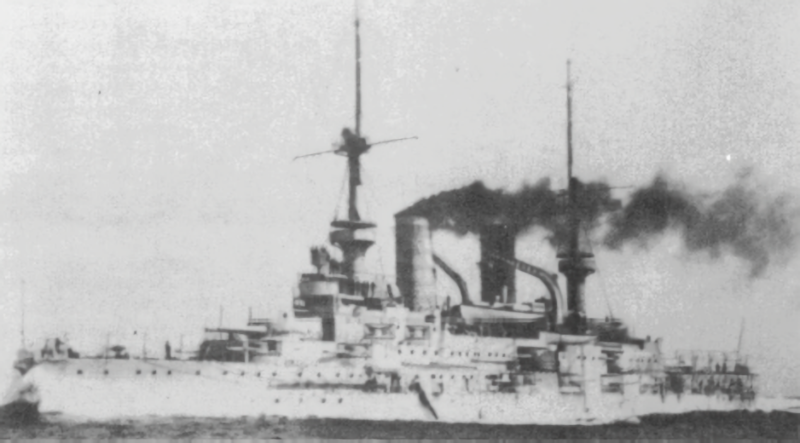German Pre-Dreadnought Battleship SMS Mecklenburg
SMS Mecklenburg was the fifth and final ship of the Wittelsbach-class of German pre-dreadnought battleships, built for the Imperial German Navy at the turn of the 20th century (along with her sisters Wittelsbach, Zähringen, Wettin, and Schwaben). Laid down in 1899 at the AG Vulcan shipyard in Stettin and launched in 1901, she was commissioned into service in June 1903.
Mecklenburg displaced around 12,700 tons fully loaded and was armed with a main battery of four 24 cm (9.4 in) guns mounted in twin turrets fore and aft. Her secondary armament comprised eighteen 15 cm (5.9 in) quick-firing guns for use against cruisers and destroyers, along with lighter weapons and torpedo tubes for close defence. Armour protection followed the typical scheme of the period, with an armoured belt, turrets, and conning tower providing the strongest protection, while speed was modest at around 18 knots, generated by triple-expansion steam engines.
Upon commissioning, Mecklenburg joined the I Squadron of the active battle fleet and spent the next decade engaged in training, fleet manoeuvres, and goodwill cruises, representing the Kaiserliche Marine in both domestic and international waters. She served as flagship of the I Squadron for a time and participated in the large-scale naval exercises that were a hallmark of Admiral von Tirpitz’s fleet-building programme.
By the outbreak of the First World War in 1914, Mecklenburg, though modern at her commissioning, had already been rendered obsolete by the advent of dreadnought battleships and the battlecruiser concept. Nevertheless, she was mobilised with her sisters into IV Battle Squadron, based in the North Sea. She undertook limited operations in the opening months of the war, including coastal security patrols and sorties into the Baltic. However, the high risk of submarine and mine attack, combined with her outdated design, led to her withdrawal from front-line service by 1916. After decommissioning, Mecklenburg was relegated to secondary roles, including use as a prison and barracks ship.
Following Germany’s defeat in 1918, Mecklenburg was formally struck from the naval register and eventually sold for scrapping in the early 1920s.

